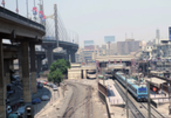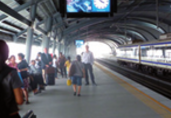With its low debt-to-GDP ratio and abundant resources, growing consumer demand, healthy political discourse and rising investment, Indonesia is set to lead the region and could become the world’s sixth-largest economy by 2030. The country has 11 commercial ports, more than 200 airports, an estimated 17,508 islands and around 245m people. The government is working to address the current lack of...
Displaying 1573 - 1578 of 1812
Chapter | Infrastructure from The Report: Indonesia 2013
Economic update | Egypt: Railway plans on track
15 Feb 2013
In the wake of a tragic train accident at the beginning of 2013, Egypt is looking to step up investment in its railways to improve safety, and upgrade infrastructure and rolling stock. Plans for the development of new tracks are also being implemented with international support.
The combination of Dubai’s central location and advanced infrastructure have attracted trade operators from around the world, and the emirate continues its legacy as a shipping point between East and West. In 2011 transportation, along with logistics, tourism and trade, accounted for 60% of Dubai’s GDP, the result of a number of recent investments. Authorities have initiated a $523m plan to build...
A massive programme of investment in Thailand’s infrastructure, designed to enhance international connectivity and competitiveness, is set to be implemented this year amid a renewed commitment to investment and regional development.
Japan has joined France, Germany, China and South Korea as a prospective investor in South Africa’s proposed high-speed rail system, which, once built, will link Johannesburg and Durban on the east coast. However, while there is no doubt about the attractiveness of the multi-billion dollar large-scale infrastructure project, questions remain about whether the project will prove profitable for private sector partners unless it is subsidised.
Articles & Analysis | Vital works: New connections will help facilitate economic growth from The Report: Mongolia 2013
The sparse population, landlocked location and extreme climate make developing Mongolia’s transportation and logistics infrastructure a prominent challenge. Deciding how to allocate the state’s limited resources is a complex question at a time when spending is needed in so many areas in order to remove the bottlenecks holding back economic growth....



